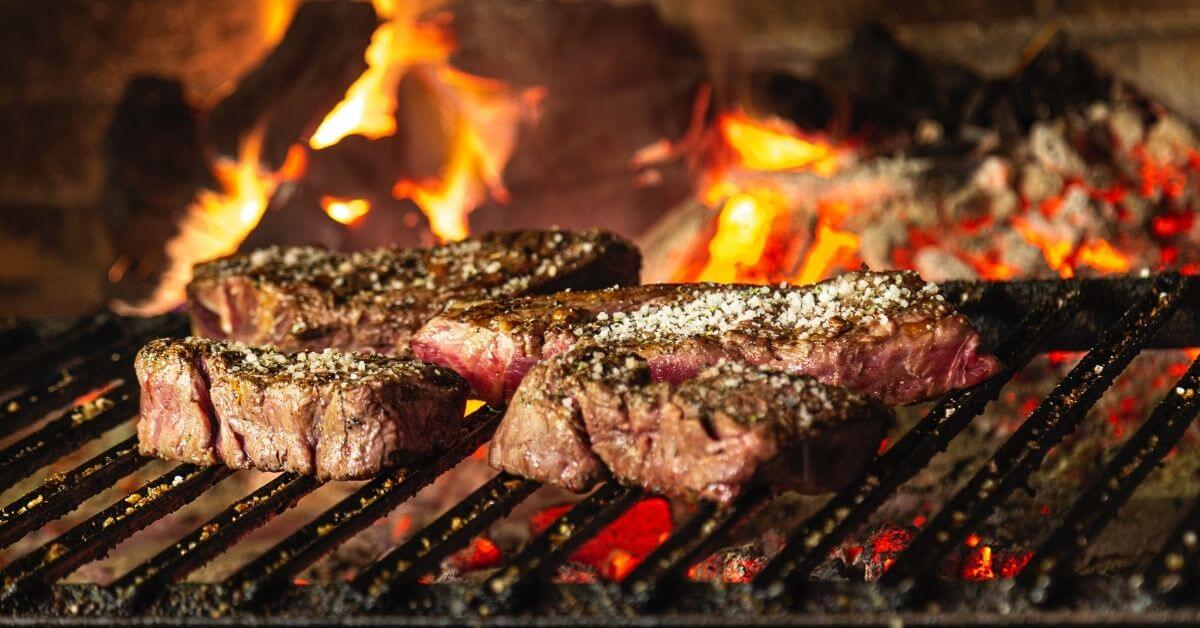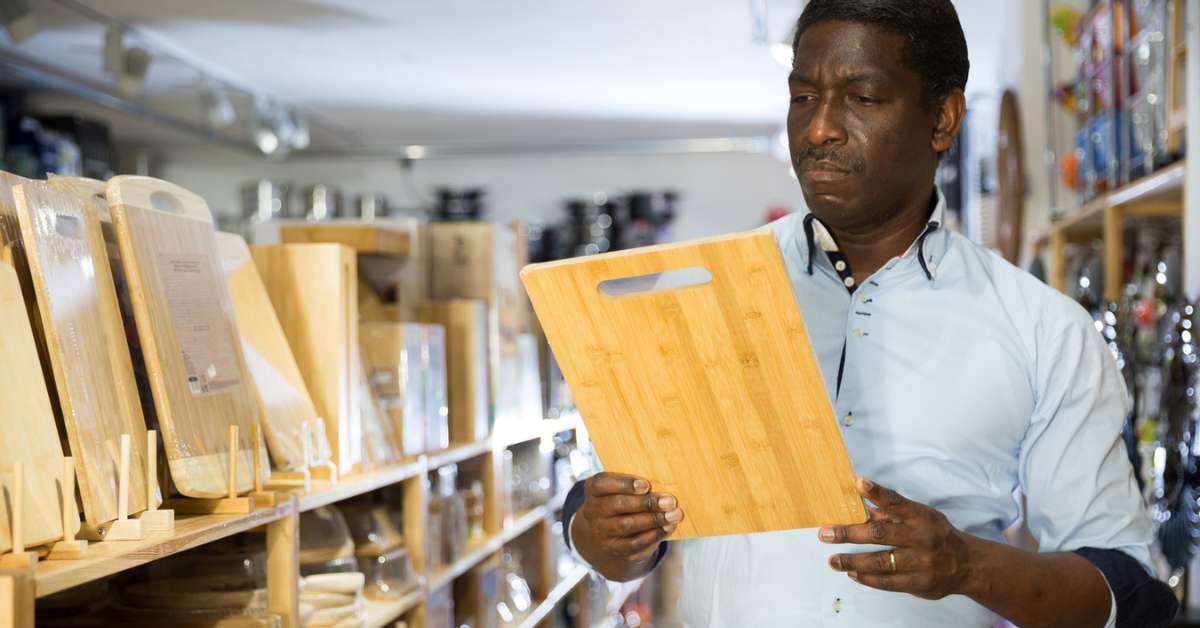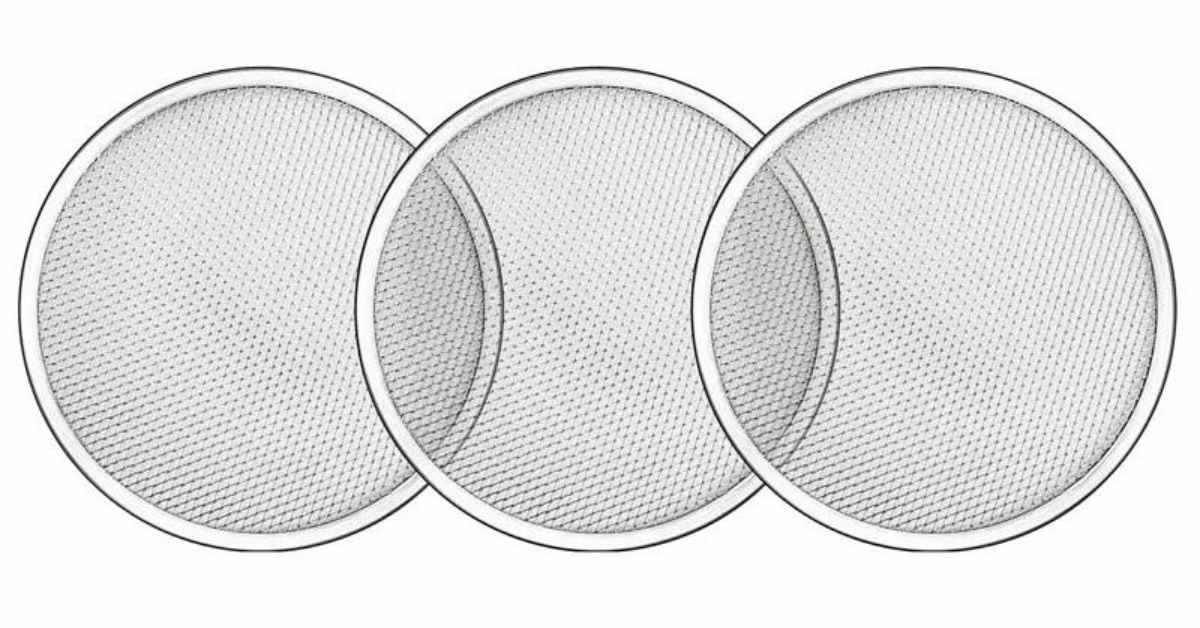Grilling a juicy and flavorful steak requires attention to detail at every step, including properly rendering its fat on the grill. If the fat is not correctly caused on the grill, it can lead to uneven cooking and a charred exterior of the steak due to flare-ups. On the other hand, when the fat is rendered correctly, it can contribute to a tender, juicy, and delicious steak that is cooked to perfection.
In this article, we’ll explore How to Render Steak Fat on Grill and provide step-by-step instructions on how to do it. We’ll discuss the different methods for rendering fat and the best practices for ensuring a mouth-watering result.
Whether you’re an experienced grill master or a novice seeking to enhance your grilling abilities, this article will offer valuable insights and tips to help you attain grilling excellence. Let’s begin our journey and discover the art of rendering steak fat flawlessly on the grill!
Table of Contents
ToggleHow Do You Render Meat Fat
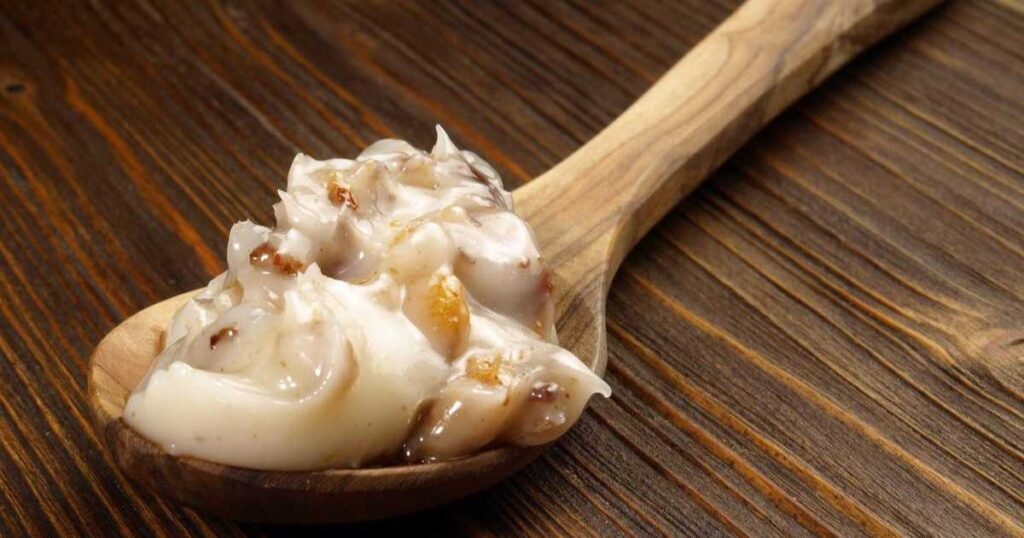
There are a few different methods for rendering meat fat, but the most common way is to use indirect heat. This involves placing the steak on a more remarkable part of the grill, away from the direct flame, and allowing the fat to melt and drip off slowly.
Another technique involves utilizing a cast-iron skillet or griddle on the grill, which aids in even heat distribution and minimizes flare-ups. Regardless of the method chosen, patience is crucial. Allowing the fat to render slowly is essential to avoid overcooking or charring the steak.
By rendering the fat correctly, you’ll be rewarded with a tender, juicy, and flavorful steak that will impress you.
You can also read the following: Vermicelli vs Rice Noodles: What’s the Difference? 2023
How Do You Render Steak Fat without Overcooking
While it’s crucial to correctly render the fat on a steak, avoiding overcooking the meat in the process is equally important. To achieve this, it’s vital to use indirect heat and carefully monitor the grill’s temperature.
Begin by searing the steak over high heat on each side for approximately one to two minutes to create a flavorful crust. Afterward, transfer the steak to a less intense heat area of the grill and continue cooking until it reaches your desired internal temperature.
To guarantee that the steak is cooked according to your preference, use a meat thermometer to check the internal temperature regularly. Once the steak reaches your desired level of doneness, please remove it from the grill. Following this approach, you can achieve impeccably rendered fat without overcooking the steak.
Different Types of Steak Fat
Regarding steak, different types of fat can affect the meat’s flavor, tenderness, and overall quality. Understanding the different kinds of steak fat will help you make a more informed decision when selecting and cooking your steak. Here are the three main types of steak fat:
Intramuscular Fat (Marbling)
One of the most desirable types of fat in a steak is intramuscular fat, also known as marbling. Marbling refers to the small streaks of fat dispersed throughout the meat’s muscle fibers.
This type of fat is prized for its ability to add flavor, moisture, and tenderness to the steak. Marbling can help create a juicy and delicious steak that will impress when appropriately rendered.
Subcutaneous Fat (External Fat)
Subcutaneous fat is the external fat surrounding the steak’s muscle. While this type of fat can add flavor and moisture to the meat, it is also more prone to causing flare-ups on the grill, leading to uneven cooking and charring.
To render subcutaneous fat correctly, it’s essential to use indirect heat and carefully monitor the grill’s temperature. Doing so ensures the fat is rendered slowly and evenly, resulting in a tender and flavorful steak.
Flank Fat (Connective Tissue)
Flank fat, also known as connective tissue, is the fibrous tissue that runs through the muscle of the steak. While this type of fat is less desirable than intramuscular fat, it can still add flavor and moisture to the meat when adequately rendered.
A low and slow cooking method, such as braising or slow-roasting, is essential to render flank fat. By doing so, the connective tissue can break down and become tender, resulting in a delicious and succulent steak.
How to Choose the Right Cut of Meat For Grilling

Choosing the proper cut of meat is crucial when grilling a delicious steak. The best cuts for grilling are those that have a good amount of marbling and are lean enough. This includes cuts such as ribeye, New York strip, and porterhouse. These cuts are well-marbled and have a good amount of fat, which helps keep the steak moist and flavorful during cooking.
In addition to the meat cut, choosing a high-quality steak is also essential. Look for bright red meat with a good amount of marbling throughout. Avoid scratches that are too lean or have a greyish color, as this can indicate that the heart is old or of lower quality.
How to Prepare the Steak for Grilling
Seasoning and Marinade Tips
Choosing the correct seasoning or marinade is one of the most critical aspects of preparing a steak. A simple seasoning of salt and pepper can bring out the meat’s natural flavors, while a marinade can add extra flavor and tenderize the steak.
When using a marinade, let the steak marinate for at least a few hours or overnight, depending on the recipe. If using a dry rub or seasoning, apply it generously to both sides of the steak, and let it sit at room temperature for at least 30 minutes before grilling.
Letting the Steak Come to Room Temperature
Before grilling, it’s essential to let the steak come to room temperature. This allows the steak to cook more evenly and helps to prevent it from becoming brutal or overcooked. To let the steak come to room temperature, remove it from the refrigerator about 30 minutes before grilling and let it sit on the counter.
How to Properly Oil the Grill Grates
Another critical aspect of preparing a steak for grilling is properly oiling the grill grates. This helps to prevent the steak from sticking to the grill and ensures even cooking.
To oil, the grill grates, dip a folded paper towel in vegetable oil and use tongs to rub the oil onto the grates. Be sure to oil the grates just before grilling to prevent the oil from burning off. You can help ensure a perfectly grilled steak every time by properly oiling the grill grates.
You can also read the following: Trader Joe’s Pita Bread: The Ultimate Guide 2023
Grilling Techniques for Perfectly Rendered Fat
Direct Heat vs. Indirect Heat
One of the essential grilling techniques for rendering steak fat is knowing when to use direct heat vs. indirect heat. Direct heat is best for thinner cuts of steak, such as flank or skirt steak, while indirect heat is better for thicker cuts, such as ribeye or New York strip.
Direct heat involves placing the steak directly over the flame or hot coals, while indirect heat involves placing the steak off to the side of the love or coals with the lid closed.
Searing and Resting
Another critical technique for rendering steak fat is searing and resting. Searing the steak over high heat helps to create a flavorful crust on the outside while allowing the steak to rest after cooking helps to redistribute the juices and ensure a juicy and tender steak.
To sear the steak, position it directly over the heat source and grill for approximately 2-3 minutes per side. Subsequently, transfer the steak to an area of indirect heat and continue grilling until it reaches your preferred level of doneness. Once cooked, allow the steak to rest for at least 5 minutes before slicing and serving.
Basting and Brushing
Basting and brushing the steak with butter or oil during the grilling process can also help to render the fat and create a delicious flavor. To baste or brush the steak, use a basting brush or a brush made from herbs, like rosemary or thyme, and apply the butter or oil to the steak while cooking.
This helps to create a flavorful crust on the outside of the steak and adds moisture to the meat, allowing it to stay tender and juicy. By using these grilling techniques, you can ensure a perfectly rendered and deliciously flavorful steak every time.
Monitoring the Steak’s Temperature
One of the keys to cooking a perfectly grilled steak is monitoring the temperature of the meat throughout the cooking process. Here’s why using a meat thermometer is essential, and the different temperatures to aim for based on your desired level of doneness:
A meat thermometer ensures your steak is cooked to your liking while avoiding overcooking and undercooking. By inserting the thermometer into the thickest part of the steak, you can accurately measure the internal temperature and determine when the steak is done to your desired level of doneness.
The Different Temperatures
The ideal internal temperatures for different levels of doneness are as follows:
- Rare: 120-130°F (49-54°C)
- Medium rare: 130-135°F (54-57°C)
- Medium: 135-145°F (57-63°C)
- Well done: 145-155°F (63-68°C)
It’s important to note that these temperatures are just guidelines, and personal preference plays a significant role in determining the ideal level of doneness. Additionally, it’s recommended to let the steak rest for a few minutes after cooking to allow the juices to redistribute and the temperature to even out.
By monitoring the temperature of your steak and allowing it to rest properly, you can ensure that it is cooked perfectly every time.
Resting and Slicing the Steak
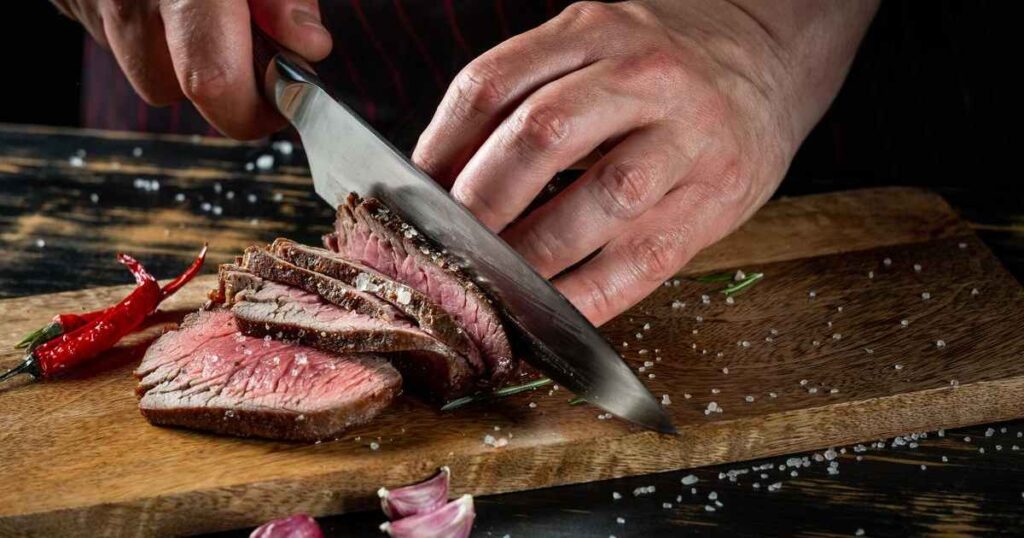
After the steak is cooked to perfection, it’s essential to let it rest before slicing it. Here’s how to properly cut the steak for optimal flavor and texture:
The Importance of Letting the Steak Rest
Resting the steak is crucial for several reasons:
- It redistributes the juices throughout the meat, ensuring each bite is juicy and flavorful.
- It allows the steak to continue cooking and reach its optimal level of doneness.
- It makes the steak easier to slice, as the muscle fibers relax during rest.
To rest the steak, remove it from the grill and place it on a cutting board. Tent it with aluminum foil to keep it warm, and let it rest for 5-10 minutes before slicing.
How to Properly Slice the Steak
When slicing the steak, remember a few things:
- Always slice against the grain, which means cutting perpendicular to the direction of the muscle fibers. This helps to break up the fibers and make the steak more tender.
- Use a sharp knife to create clean, even cuts.
- Slice the steak thinly to ensure each bite is easy to chew and packed with flavor.
Troubleshooting Common Grilling Mistakes
Grilling can be tricky; even the most experienced masters can make mistakes. Here are some common grilling mistakes and how to troubleshoot them:
Tough or Dry Steak
If your steak turns out tough or dry, it may be overcooked. To prevent this, monitor the steak’s temperature using a meat thermometer. Remove the steak from the grill when it’s a few degrees below your desired level of doneness, as it will continue to cook while it rests.
Also, let the steak rest for at least 5-10 minutes before slicing, as this will help the juices redistribute throughout the meat and ensure that it stays moist and flavorful.
Burnt or Charred Fat
Burnt or charred fat can ruin the flavor and texture of your steak. To prevent this, trim any excess fat before grilling, which can cause flare-ups and charring. Also, keep the grill temperature moderate rather than high, and avoid grilling the steak directly over the flames. Instead, use indirect heat to render the fat slowly and evenly.
Unevenly Rendered Fat
If the fat on your steak is unevenly rendered, it may be due to its thickness or the grill’s temperature. To ensure even causing, choose consistent thickness steaks, and preheat your grill to the proper temperature before adding the meat. Move the steak to a more remarkable grill part to prevent the fat from burning or charring.
Pairing Steak with Sides and Sauces
Classic steakhouse sides include baked potatoes, sautéed mushrooms, creamed spinach, and roasted vegetables. Regarding sauces, options such as béarnaise, chimichurri, and red wine reduction are popular choices. These sides and sauces complement the rich and hearty steak flavor and can add a layer of decadence to your meal.
Try serving your steak with unexpected sides and sauces for a more unique and creative pairing. For example, grilled peaches or pineapple can add a sweet and tangy contrast to the savory steak. A bright and citrusy salsa can also bring a fresh flavor to the dish. Additionally, consider experimenting with international flavors, such as a spicy Korean gochujang sauce or a savory Indian chutney.
Ultimately, the perfect pairing for your steak will depend on your taste preferences and the occasion. Enjoy every delicious bite, whether you opt for traditional sides and sauces or try something new and unexpected.
How to Clean and Maintain Your Grill
Cleaning and maintaining your grill is essential for optimal performance and longevity. Here are some tips to keep your grill in top shape:
Proper cleaning techniques:
- Before cleaning, ensure the grill has cooled down to avoid injury.
- Remove excess debris from the grill grates using a grill brush or scraper.
- Clean the grates with hot soapy water and a scrub brush, or place them in a self-cleaning oven.
- Wipe down the grill’s exterior with a damp cloth or sponge, and use a degreaser for stubborn stains.
- Empty the grease tray and ash catcher regularly to prevent buildup.
Seasoning the grill grates:
- After cleaning, use a high-heat oil (such as canola or vegetable oil) to coat the grates.
- Heat the grill to a high temperature (around 500°F) and let the grates cook for 15-20 minutes.
- The oil will create a non-stick surface on the grates and prevent food from sticking.
Following these tips, you can keep your grill in top condition and ensure it’s always ready for your next barbecue.
Conclusion
Mastering steak fat on the grill is crucial for achieving perfectly cooked, juicy steaks. By correctly rendering the fat, you can enhance the flavor and texture of the meat and prevent it from becoming dry or tough.
Throughout this article, we’ve provided tips and techniques for achieving the perfect steak, from choosing the proper cut of meat to monitoring the temperature and resting and slicing the steak properly.
We’ve also discussed everyday grilling mistakes to avoid and offered suggestions for pairing your steak with sides and sauces. So fire up your grill, follow these tips, and savor the fruits of your labor.
FAQs
What is the best type of steak for grilling?
The best-grilled steaks are those with marbling, such as ribeye, New York strip, or filet mignon. These cuts have enough fat to keep them moist and flavorful on the grill.
How do I know when my steak is done?
The best way to know when your steak is done is to use a meat thermometer. Please insert it into the thickest part of the steak; when it reaches the desired temperature, it is ready. For rare, cook to 125°F; for medium rare, cook to 135°F; for medium, cook to 145°F; and for well-done, cook to 160°F.
Should I oil the steak or the grill grates?
It’s best to oil the grill grates, not the steak. This helps prevent sticking and promotes even cooking.
What is the difference between direct and indirect grilling?
Direct grilling is when you place the steak directly over the heat source, while indirect grilling is when you cook the steak next to the heat source with the lid closed. Direct grilling is best for thinner cuts, while indirect grilling is best for thicker cuts or when you want to cook the steak more slowly.
Is it safe to eat undercooked steak?
It’s not recommended to eat undercooked steak, as it can contain harmful bacteria. Always cook your steak to the proper temperature to ensure it’s safe.

